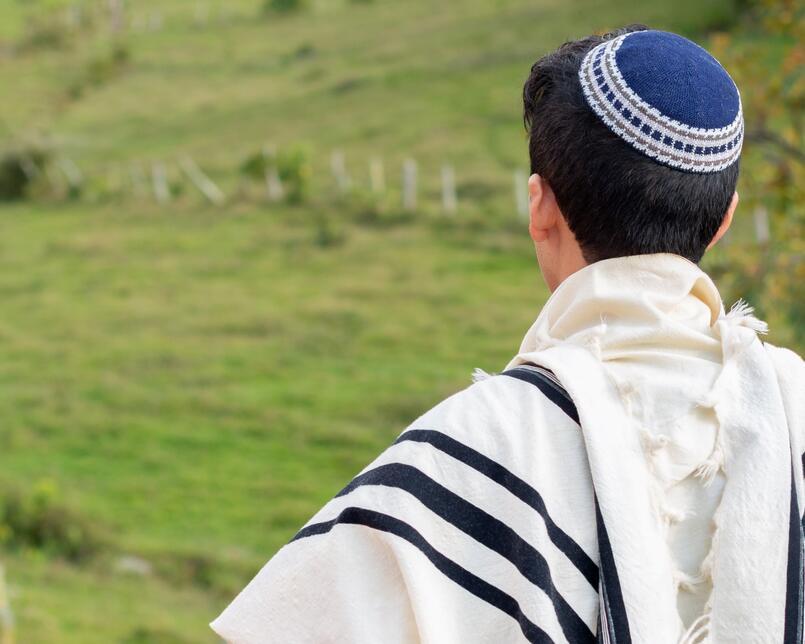Tu b’Av is the Jewish holiday of love. So what does Jewish love looks like today?
Dr Jonathan Boyd
and test your family's knowledge of Jews worldwide while reading the Haggadah!
Dr Jonathan Boyd
The institution of marriage has taken a pretty big hit over the past half-century. In the UK, the number of opposite-sex marriages taking place has fallen by 50% since 1972, having held reasonably steady in the post-war period, and that’s in spite of the fact that the population of the country has grown by 20% over the same period.
Yet Jews in the UK somewhat buck the overarching trend. Of all major ethnic and religious groups, Jews are most likely to be living in a couple – six in ten of all adult Jews do so. And almost 90 per cent of all of these are married or in a civil partnership (over 2,200 Jews are in same-sex couples), even though those marrying for the first time are doing so seven years later on average than they were in the 1970s. The remainders are cohabiting, but this is still a comparatively rare choice among Jews living in couples – not as rare as among Muslims, Sikhs and Hindus, but considerably lower than the national average.
So Jews in the UK retain a fairly traditional approach to family life, certainly compared to the national picture. Marriage and family continue to matter. Yet when we look at the data, we find that there is no such thing as an identikit Jewish household. Only 25% of all Jewish homes are comprised of the stereotypical married couple with children. The remainder is split between people living alone (33%), married couples without children (13%), elderly married couples over 65 (11%), single-parent households (6%), cohabiting couples with or without children (5%) and other types of arrangements (8%). Two out of three Jewish households have no children living within them.
Most married British Jews are married to other Jews: 78% of them in total, by our latest count. Intermarriage remains relatively uncommon in the UK; over the past decade or so, 26% of marriages involving at least one Jew were intermarriages, compared to 61% in the United States. That said, cohabiting Jews in the UK are much more likely than married Jews to be living with a non-Jewish partner – 68% of them are in this position – and cohabiting is much more common among younger Jews (aged under 30) than older Jews.
While British Jews certainly love living in couples, when we take a snapshot of all Jewish households across the country, we find that one in three Jewish households contains just one person living alone, higher than the national average. One of the key reasons for this is the older than average age profile of the Jewish population – half of all these single-person Jewish households contain an elderly person living alone, most of whom are widowed. The other half are singles aged under 65, who may or may not have been married previously, but either way, are now on their own. As robust as the institution of marriage continues to be among Jews, singlehood is also remarkably common.

At the same time, one in eighteen Jewish households contains a single parent living with their children, often following a marital breakdown. This is much lower than the national average (which is about one in nine), and indeed lower than all other religious groups, yet is often a very difficult situation to navigate, not least financially – research JPR conducted during the pandemic found that one in seven Jewish single-parent households was ‘acutely disadvantaged’ – i.e. using food banks, reducing the size of meals due to economic stress, borrowing money or using credit, and/or struggling to pay bills.
As we celebrate the Jewish holiday of love, it is important to remember that a key challenge for Jewish communities is how to be optimally inclusive of those who don’t quite fit the mould
Jewish love comes in multiple shapes and forms: marriage or couplehood, to other Jews or with partners from other faiths or none, with someone from the opposite sex or your own, with or without children. And many, of course, are living without a partner at all. So as we celebrate the Jewish holiday of love, it is important to remember that a key challenge for Jewish communities, many of which venerate traditional models of family, is how to be optimally inclusive of those who don’t quite fit the mould. And many do not.
Executive Director
Executive Director
Jonathan has been Executive Director of JPR since 2010, having previously held research and policy positions at the JDC International Centre for Community Development in...
Read more